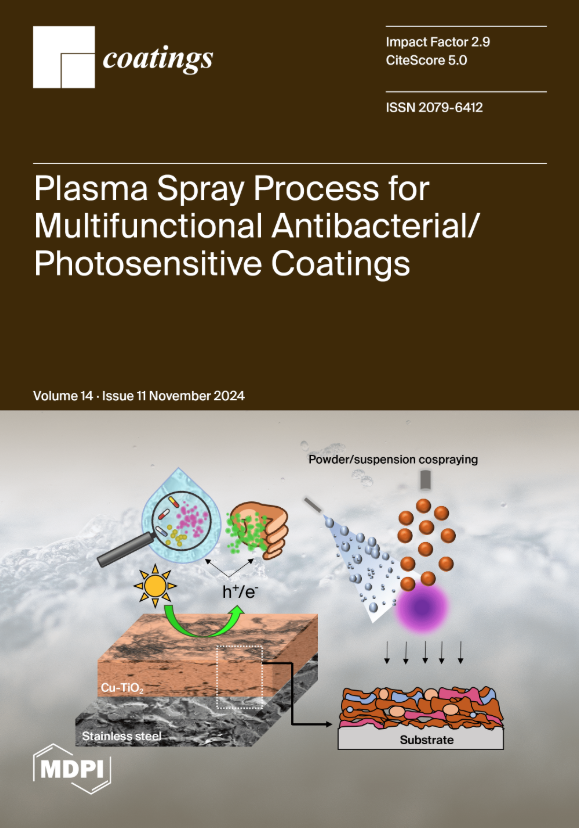Investigation of the Flow Characteristics of Coated Slag during Continuous Casting
IF 2.8
3区 材料科学
Q2 MATERIALS SCIENCE, COATINGS & FILMS
引用次数: 0
Abstract
During continuous casting, coated slag is applied to molten steel to enhance heat transfer and lubrication. In this study, a numerical calculation model was built to reveal the flowing characteristic of slag according to the fundamental principles of heat transfer and viscous fluid mechanics. The flow and heat transfer behaviour of protective slag on the surface of molten steel and the flow velocity of liquid slag in slag channel gaps were calculated and analyzed. The streaming and thermal conduction situation of slag on the surface of molten steel, as well as the flow velocity of liquid flux in the slag passage gap, were calculated and analyzed. The results showed that as the thickness of the liquidus slag film increased from 10 to 12 mm, the thermal flux density at the top of the flux film layer decreased from 0.1059 to 0.0882 MW/m2. The heat flux density increased rapidly within 0.1 m of the narrow side of the mould, reaching a peak value of 2.27 MW/m2. As the viscosity temperature factor of the flux increased from 0.45 to 2.05, the maximum floating speed of the liquid film from the water inlet to the narrow side in the centre district of the mould decreased from 0.0316 to 0.028 m/s, representing a reduction of approximately 11.4%. This study can provide a reference for the design and improvement of protective slag.连铸过程中涂层熔渣流动特性的研究
在连铸过程中,为了加强传热和润滑,会在钢水中加入涂层熔渣。本研究根据传热学和粘性流体力学的基本原理,建立了一个数值计算模型来揭示熔渣的流动特性。计算并分析了保护渣在钢水表面的流动和传热行为,以及液态渣在渣道间隙中的流速。计算并分析了保护渣在钢水表面的流动和热传导情况,以及液体流体在保护渣通道间隙中的流动速度。结果表明,随着液态熔渣膜厚度从 10 mm 增加到 12 mm,熔剂膜层顶部的热通量密度从 0.1059 MW/m2 下降到 0.0882 MW/m2。在结晶器窄边 0.1 米范围内,热通量密度迅速增加,达到 2.27 MW/m2 的峰值。随着通量的粘温系数从 0.45 增加到 2.05,液膜从进水口到结晶器中心区窄侧的最大浮动速度从 0.0316 米/秒下降到 0.028 米/秒,下降了约 11.4%。这项研究可为保护渣的设计和改进提供参考。
本文章由计算机程序翻译,如有差异,请以英文原文为准。
求助全文
约1分钟内获得全文
求助全文
来源期刊

Coatings
Materials Science-Surfaces, Coatings and Films
CiteScore
5.00
自引率
11.80%
发文量
1657
审稿时长
1.4 months
期刊介绍:
Coatings is an international, peer-reviewed open access journal of coatings and surface engineering. It publishes reviews, research articles, communications and technical notes. Our aim is to encourage scientists to publish their experimental and theoretical results in as much detail as possible. There is no restriction on the length of the papers. Full experimental and/or methodical details must be provided. There are, in addition, unique features of this journal:
* manuscripts regarding research proposals and research ideas will be particularly welcomed
* electronic files or software regarding the full details of the calculation and experimental procedure - if unable to be published in a normal way - can be deposited as supplementary material
 求助内容:
求助内容: 应助结果提醒方式:
应助结果提醒方式:


